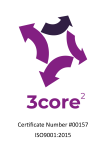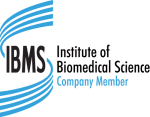Article of Interest (Epigenetics): Histone H4, Thrombosis & Inflammation
Abstract
Inflammatory cytokines promote the activation of coagulation
through the induction of tissue factor, downregulation of thrombomodulin and
upregulation of plasminogen activator inhibitor. In addition to these
mechanisms, infections can trigger the release of extracellular traps from
leukocytes consisting of DNA and histones. Tissue injury results in release of
nucleosomes. Either of these histone containing structures activate platelets
and form a potent procoagulant surface on polyphosphates secreted from the
platelets, thereby augmenting thrombus formation. In addition, the histones can
inhibit thrombomodulin function. The combination of augmenting the platelet
procoagulant activity and impairing thrombomodulin activity probably explains
the microvascular thrombotic problems observed when histones are infused into
mice. Of the histones, H4 is the most potent in all of these activities. DNAase
or blocking histone H4 can decrease the thrombotic response initiated by either
the extracellular traps or nucleosomes. In addition to the direct prothrombotic
activity of histone-DNA complexes, the complexes trigger activation of the
toll-like receptors 2, 4 and 9 thereby increasing inflammatory cytokine
formation and fostering thrombotic responses through the mechanisms mentioned
previously. Furthermore, these cytokines are likely to increase cell necrosis
and apoptosis releasing nucleosomes and further augmenting the activation of
leukocytes with the subsequent release of extracellular traps. Blocking this
histone-mediated cascade has the potential to impact a variety of clinical
conditions including sepsis, trauma, chemical toxicity, transplant injury and
reperfusion injury.


